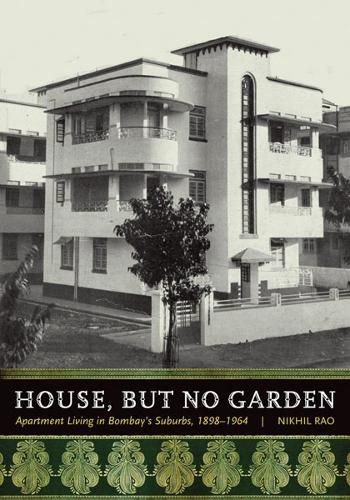
House, but No Garden: Apartment Living in Bombay's Suburbs, 1898-1964
(Paperback)
Publishing Details
House, but No Garden: Apartment Living in Bombay's Suburbs, 1898-1964
By (Author) Nikhil Rao
University of Minnesota Press
University of Minnesota Press
1st January 2013
United States
Classifications
General
Non Fiction
Asian history
307.760954792
Physical Properties
Paperback
320
Width 178mm, Height 254mm, Spine 38mm
Description
Between the well-documented development of colonial Bombay and sprawling contemporary Mumbai, a profound shift in the citys fabric occurred: the emergence of the first suburbs and their distinctive pattern of apartment living. In House, but No Garden Nikhil Rao considers this phenomenon and its significance for South Asian urban life. It is the first book to explore an organization of the middle-class neighborhood that became ubiquitous in the mid-twentieth-century city and that has spread throughout the subcontinent.
Rao examines how the challenge of converting lands from agrarian to urban use created new relations between the state, landholders, and other residents of the city. At the level of dwellings, apartment living in self-contained flats represented a novel form of urban life, one that expressed a compromise between the caste and class identities of suburban residents who are upper caste but belong to the lower-middle or middle class. Living in such a built environment, under the often conflicting imperatives of maintaining the exclusivity of caste and subcaste while assembling residential groupings large enough to be economically viable, led suburban residents to combine caste with class, type of work, and residence to forge new metacaste practices of community identity.
As it links the colonial and postcolonial cityboth visually and analyticallyRaos work traces the appearance of new spatial and cultural configurations in the middle decades of the twentieth century in Bombay. In doing so, it expands our understanding of how built environments and urban identities are constitutive of one another.
Reviews
"As early as the 1920s a distinctively Indian form of suburbanization was rising north of Bombay based on modern apartment living: the 'house but no garden.' As Nikhil Rao shows in this fascinating and pathbreaking book, these 'Bombay flats' not only created a new form of suburban design; they also created a new Indian middle class." --Robert Fishman, University of Michigan
"Ingeniously reversing the conventional perspective, "House, but No Garden" offers a historical account of colonial Bombay from the point of view of its suburbs. It suggests that rather than being subordinate to the existing city, Bombay's suburbs pioneered such urban forms as apartment living, cooperative societies, and urban 'meta caste' identities. This not only offers a refreshingly original understanding of colonial and postcolonial Bombay but also challenges the existing literature on suburbanization. An impressive achievement." --Gyan Prakash, Princeton University
Author Bio
Nikhil Rao is assistant professor of history at Wellesley College.
